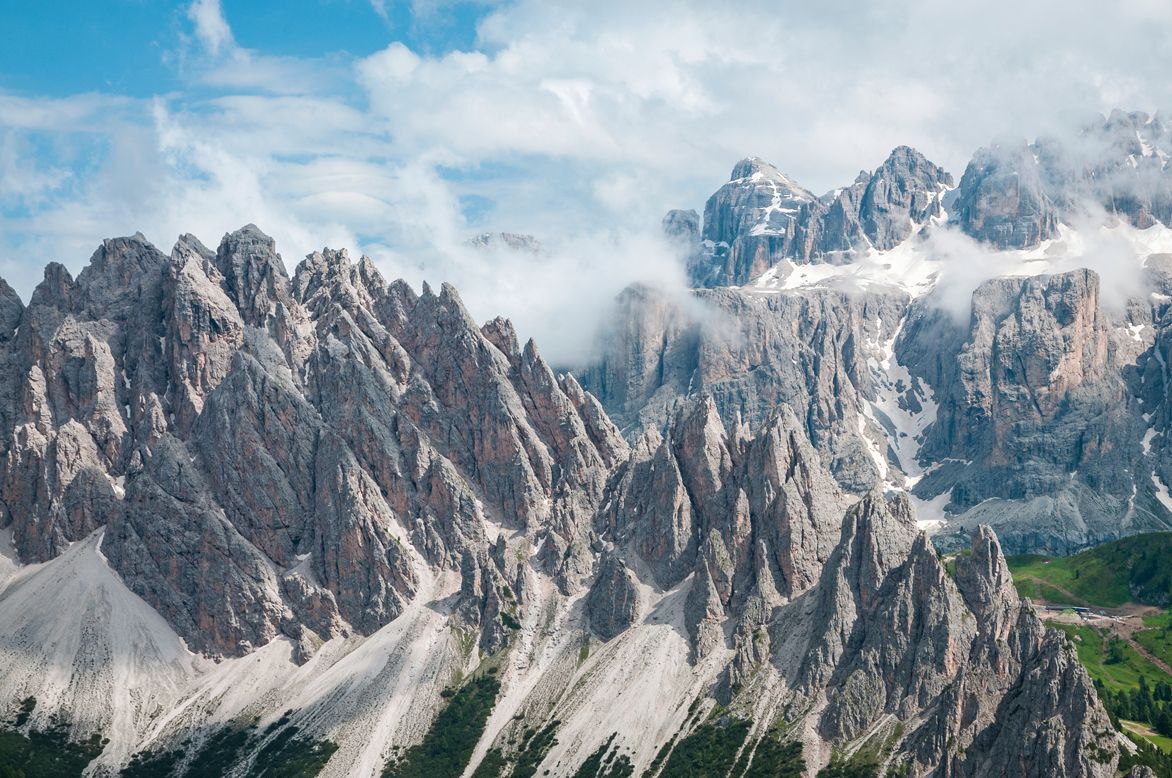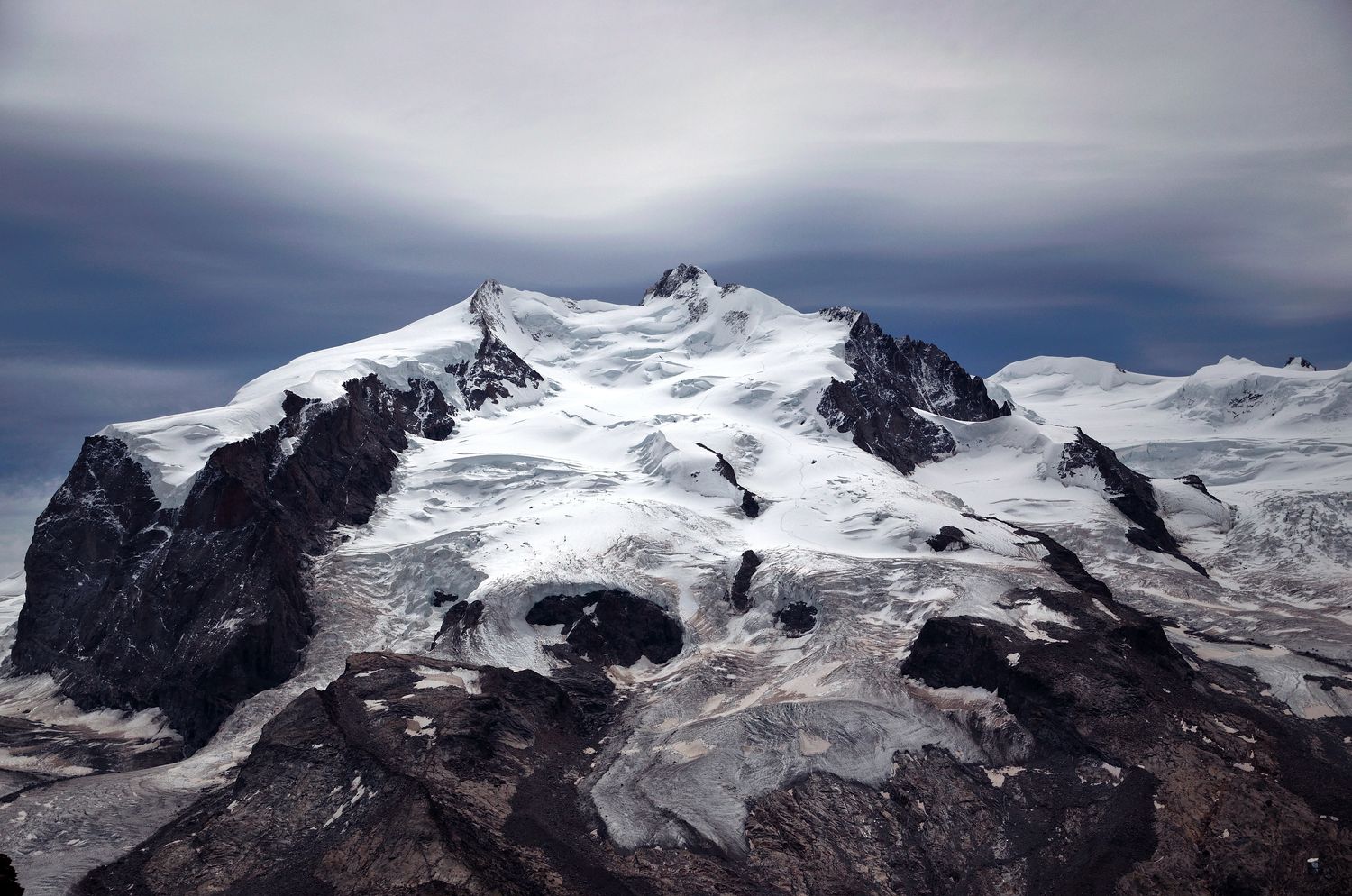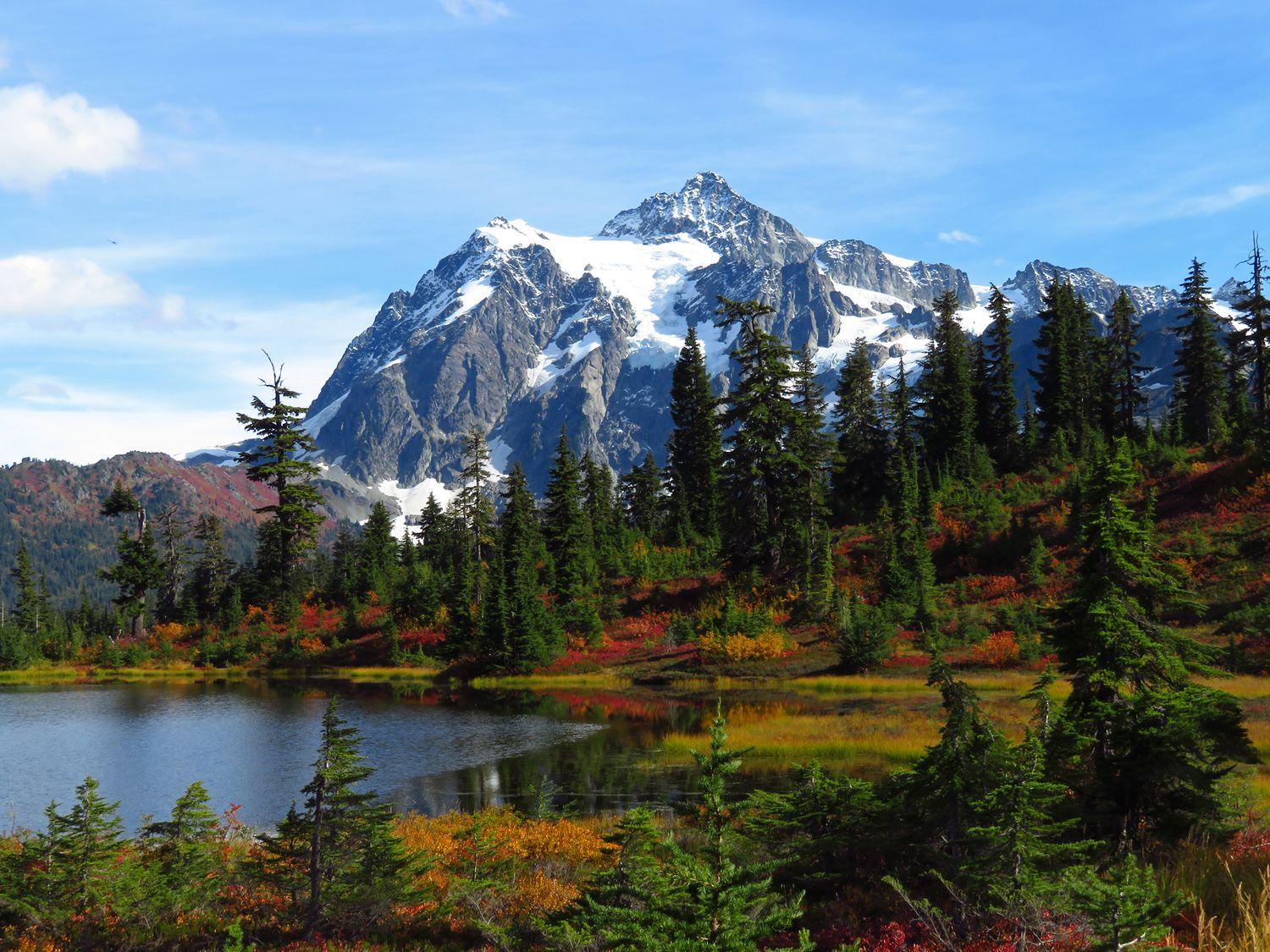10 Late Season Climbing and Trekking Destinations in the Age of COVID
The summer is beginning to wind down in the northern hemisphere and unlike almost every year before, this one has been different.
Travel restrictions imposed by COVID-19, the disease caused by the novel coronavirus, have meant that for most of the spring and the first half of the summer no tourists flocked to some of the world’s most popular trekking and climbing spots.
However, as countries adjust to the new normal of face masks in public and social distancing, the mountains have never seemed like a better place to go. In fact, in many countries access to outdoor areas reopened before much of the rest of the countries did.
For those of you itching to get out and head on at least one late-season mountaineering or trekking adventure before the leaves begin to change and snow begins to fall (although, at least that means ski season is around the corner!), we’ve compiled a list of some of the top Northern Hemisphere climbing and trekking destinations!
1| Explore Triglav National Park (Slovenia)

Situated in the northwestern corner of Slovenia, the country’s only national park is home to the Julian Alps and some of Slovenia’s most impressive tracts of wilderness. After landing at Ljubljana Jože Pučnik Airport, it takes about 45 minutes to drive north to the park. By bus, it takes only a little bit longer.
Once you have arrived at Triglav National Park, there is so much to see and do! The most popular option is heading on a two-day ascent of Mount Triglav. At 2,864 metres (9,396 feet) in elevation, Triglav is the highest peak in the country and also a national symbol.
Keep reading: A Beginner's Guide to Mountaineering
Boasting numerous routes up to the summit of the peak, there is something for everyone. More advanced climbers can challenge themselves on the Vrata Valley route, which is considered the hardest up the peak. Less experienced climbers may opt for the Krma Valley route, which is widely considered to be the easiest.
Either way, the climb includes a stunningly scenic approach through the glacially-carved valleys, lined with evergreen trees. Once above the treeline on Triglav, the views keep getting better. On a clear day, it is possible to see into Austria, Italy and all the way to the Adriatic Sea.
Away from climbing Triglav, the national park boasts hundreds of kilometres of trails to explore. Of these, the 25-kilometre (16-mile) Soča trail is the most popular, providing excellent opportunities to see some of the park’s lakes and get some great views of Mount Triglav.
Can I visit Slovenia?
Slovenia is only partially open , meaning there are some restrictions for travelers coming from or who have transited through certain countries.
However, travelers from 28 countries have been given the greenlight to enter Slovenia with no mandatory quarantine. These include Austria, Denmark, Finland, France, Ireland, Italy, Germany, the Netherlands, Norway, New Zealand, parts of Spain and the United Kingdom. The rest of the list can be found here.
Unfortunately, travelers from the United States are currently prohibited from entering Slovenia.
2| Experience the Dolomites (Italy)

Located in northwestern Italy, just a couple hours north of Venice, the Dolomites are one of Italy’s most scenic and varied landscapes. Characterized by their distinctive karst limestone mountains, the Alpine subrange offers a variety of excellent climbing and hiking options.
While the Dolomites are probably best known for their numerous via ferrata routes, traditional mountain climbing options are also available. Easily the most popular is Piz Boè, on the Sella massif. At 3,152 metres (10,341 feet) in elevation, the peak is fairly easy to climb and yields incredible views over the rest of the subrange.
For more advanced mountaineers looking for a bit more of a challenge, then the iconic Tre Cime di Lavaredo should be the first stop. The massif is composed of three summits and requires some fairly technical multi-pitch rock climbing to achieve, but the spectacular views from the summit are well worth the effort of getting there.
The Dolomites are also home to some of Europe’s most exemplary long distance hiking and trekking trails. Chief among these is the Alta Via I trek. Over the course of 10 days, hikers will cross more than 100 kilometres (60 miles) of pristine countryside, getting to see some of the area’s most iconic mountains and learning about its cultural heritage.
Can I visit Italy?
According to the most recent updates from the Italian government, there are no travel restrictions in place for most countries in the European Union and Schengen Area (including the United Kingdom).
For all countries outside of the E.U. and Schengen, travel to Italy for tourism remains prohibited.
3| Climb Monte Rosa (Switzerland, Italy)

Rising to 4,634 metres (15,203 feet) above sea level, the Monte Rosa massif straddles the Italian-Swiss border in the heart of the Alps.
Composed of six different summits, Monte Rosa boasts myriad different climbing options. These range from non-technical ascents of minor summits to more intense climbs up to the top of Dufourspitze, the tallest of the summits and highest point in Switzerland.
In spite of being the second highest mountain in the Alps, Monte Rosa is one of the easiest 4000ers to climb, which makes it an especially popular late season destination. The vast majority of guides opt to take climbers on the normal route, which begins from the Monte Rosa hut and traverses the massif via its western face.
In addition to mountain climbing, hundreds of hikers and trekkers head to Monte Rosa each year as well. One of the most popular options is to spend four days circumnavigating the peak, taking in the diverse landscapes that surround it and heading up to scenic vistas to enjoy iconic views of the massif and the rest of the Alps.
Can I visit Switzerland?
There are two common starting points for expeditions to Monte Rosa: Zermatt, Switzerland and Alagna, Italy.
According to the most recent update of the Swiss Health Ministry, all E.U. nationals and Schengen Area residents are free to visit Switzerland without having to partake in the mandatory quarantine.
In general, everyone else arriving in Switzerland is required to undergo the 14 day quarantine before traveling freely within the country, including travelers from the United States.
The ministry has, however, published a list of non-EU and non-Schengen Area exceptions for the mandatory quarantine, which it updates regularly
4| Traverse the Classic Haute Route (France, Switzerland)

Stretching just over 180 kilometres (110 miles) and spanning the distance between Chamonix, France and Zermatt, Switzerland, the Classic Haute Route is one of the world’s most famous treks and a must-do for any hiking or climbing enthusiast.
Traditionally beginning in the charming resort town of Chamonix, hikers will spend two weeks traversing a series of high alpine passes, crossing glacially-carved valleys and passing by some of the most iconic peaks in all of the Alps.
Depending on previous experience, there are a couple different options to take, including a high-elevation and low-elevation variation. The high elevation variation requires some glacier climbing skills while no technical ability is required for the low elevation version.
Either way, participants will enjoy phenomenal views of both Mont Blanc and the Matterhorn along with a number of other peaks in between. For more adventurous participants, many guides also offer the option to start the trip with a two-day ascent of Mont Blanc.
Can I visit France?
The French government has lifted all travel restrictions on E.U. and Schengen Area residents as well as a select few non-European countries.
For the rest of the world, France remains partially open but with strict rules on entry and all visitors must bring a number of documents, including:
- The result of an RT-PCR virological test, dated less than three days before the traveler’s flight;
- A sworn statement stating the traveler has no symptoms of COVID-19 and has not knowingly been in contact with someone who has in the past 14 days;
- A certificate of exceptional travel to mainland France from third countries, as well as several documents to justify the reason for your trip.
5| Climb Mont Blanc (France, Italy)

Towering high above the French-Italian border, nestled into the heart of the Graian Alps, Mont Blanc is the highest point in the range and the tallest mountain in Western Europe.
Since Mont Blanc was first climbed more than 200 years ago, it has become one of the world’s top mountaineering destinations, with thousands of climbers flocking to its slopes each season. With fewer people traveling as a result of the COVID-19 pandemic, now is the perfect time to make a late season ascent of the peak while avoiding the normal crowds.
The vast majority of people who opt to climb Mont Blanc do so from the French side of the border, oftentimes beginning in Chamonix. From here, climbers will take a ski lift onto the massif and traverse the mountain's minor summits before arriving at the main summit.
There are also options to climb from the Italian side of the massif, starting at Courmayeur, but this is less popular.
Regardless of the route that is taken, Mont Blanc is best suited for intermediate-level climbers as previous glacier climbing experience is generally required. However, the views from the top of the peak make all the effort of getting up well worth it.
6| Laugavegur Trek (Iceland)

Stretching from Landmannalaugar to Thorsmork, in south-central Iceland, the Laugavegur Trek is the perfect way to get off the beaten trail and try out something a bit different this year.
After arriving at one of Reykjavik’s two international airports, trekkers will meet with the guide and head to the starting point at Landmannalaugar. Depending on time and ability constraints, there are a number of different options for trekkers.
The most popular are eight to 10-day tours that take trekkers through the volcanic landscape and provide the option for some glacier hiking as well. However, for visitors with less time, there are also four to five-day tours and week-long tours.
Regardless of which option is selected, each trekking tour provides visitors with the opportunity to see the country’s diverse landscape, including its glaciers, colourful mountains, lava fields and hot spring.
Can I visit Iceland?
The Icelandic government’s Directorate of Immigration has announced that all travel restrictions on European Union and Schengen Area residents have been lifted, meaning these people can visit the country freely.
Outside of Europe, there is a secondary list of 11 countries for whom travel restrictions have also been lifted. Australia, Canada and New Zealand are among these countries.
Residents of all other countries are prohibited from visiting and vacationing in Iceland, for now.
7| Climb Kilimanjaro (Tanzania)

Situated in northeastern Tanzania, Mount Kilimanjaro is one of the world's most notable massifs and an incredibly popular trekking destination.
The dormant volcanic peak is the highest mountain in Africa, making it one of the world’s Seven Summits. Kili – as it is affectionately known by the local population – is also the world’s tallest freestanding mountain and the fourth most prominent.
In spite of all of this, it is considered to be a trekking peak as no technical ability is required to climb to its main summit, which makes it the easiest of the world’s Seven Summits to climb.
Keep reading: Climbing Elbrus and Kilimanjaro: How the First 2 of the Seven Summits Compare
Boasting a variety of different routes that lead up to the main summit, Uhuru, Kilimanjaro is a popular late-summer climbing destination, with expeditions to the top running all the way to October.
Due to its immense prominence, expeditions to the top of Kilimanjaro take climbers through a number of different ecosystems, including tropical forests, alpine plains and glaciated mountain slopes.
Many visitors to Kilimanjaro also opt to visit nearby Serengeti National Park and the Ngorongoro Crater to see some of Africa’s most iconic wildlife.
Can I visit Tanzania?
Tanzania has not implemented any travel restrictions related to COVID-19.
8| Climb Mount Rainier (United States)

Situated in the heart of the Cascade Range in south-central Washington state, Mount Rainier is one of the United States’ most popular mountaineering and hiking destinations.
The active stratovolcano boasts a challenging but scenic climb up any of its three main routes. While the peak is not very technically difficult, it is the perfect challenge for intermediate-level mountaineers and combines glacier travel with mixed rock and ice climbing to get to the summit.
Many climbers opt to head to Mount Rainier in preparation for longer and more challenging mountaineering expeditions in the Alaska Range or the Himalayas. After a long summer cooped up in the house, it is the perfect spot for American-based climbers to go and enjoy a late season climb.
Away from mountaineering, Mount Rainier National Park also boasts a number of different hiking trails that are perfect for single day excursions as well as multi-day backpacking trips.
Can I visit the United States?
According to the United States’ Centre for Disease Control , travelers who have visited Brazil, Iran, China, the Schengen Area, the United Kingdom and Ireland in the 14 days prior to arrival in the United States are prohibited from entering the country.
All other international visitors are able to come and go as they normally would.
9| Climb Shuksan (United States)

Listed as one of North America’s 50 Classic Climbs and also identified as one of the top 35 mountains in North America on Fred Beckey’s ‘Great Peaks of the Continent’, Mount Shuksan should be at the top of any U.S.-based mountaineer’s bucket list.
Situated just south of the Canadian border, in Washington state’s Cascade Range, the peak has four distinct faces and five different ridgelines. Boasting a number of different routes that lead to the summit, Shuksan is perfect for climbers of all levels.
The most popular route to the top is also the easiest and only requires some modest glacier climbing and scrambling. However, tougher routes require a mix of rock and ice climbing as well.
Away from climbing, the southeastern flank of Mount Shuksan is home to Sulphide Creek Falls, which is one of the tallest waterfalls in North America. This makes the mountain a popular hiking destination as well.
10| Climb Whitney (United States)

Rising high above the other peaks in California’s Sierra Nevada, Mount Whitney is the highest mountain in the contiguous United States and, as a result, is one of the country’s most popular hiking and climbing destinations.
The massive granite mountain sits at the end of the famed John Muir Trail and as a result receives hundreds of hikers each year. With fewer people traveling as a result of COVID-19, now may be the perfect time to get out onto the mountain and escape some of the crowds.
Overall, Mount Whitney is rated as a trekking peak since the easiest route to the summit requires no technical ability. However, the hike is quite long and steep. For those looking for a bit more of a challenge, the slightly shorter Mountaineer’s trail requires sustained scrambling to reach the top. The even tougher East Face route requires sustained rock climbing to reach the summit.
Regardless of which route is chosen, hikers and climbers alike will enjoy the incredible scenery of Sequoia National Park and rugged mountains of east-central California.
It’s been a long summer for most of us, filled with uncertainty about the future and preoccupation for the present. Now that most countries have partially lifted lockdowns, it is the perfect time to head out into nature to destress a bit and head on one late season trekking or climbing expedition.
Start planning your next adventure today!
So what are you waiting for? Begin comparing trips and planning your next expedition to one of these superb late-season trekking and mountaineering destinations on Expedreview!
